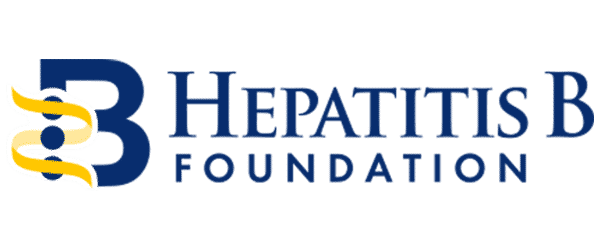
Home » Transcript Library » Grounded Theory Axial Coding
Grounded Theory Axial Coding
[0:00:06]
Okay, so that’s the first stage that Strauss & Corbin talk about when you’re doing grounded theory, the open coding stage. And you would normally go through all of the text you’ve got and code them up in that kind of fashion. So you’ve now got a completely coded set of data by this stage, by the end of open coding. It’s not final coding, but everything has been looked at, there’s nothing left out.
Now you start the second stage, according to them and that’s axial coding and it’s about exploring the relationships of categories or codes to each other. How does one code relate to another? Making connections between them and asking yourself a question, if this is happening here in these kind of people, in these kind of places, is this going on as well, something else, another code, how is it related to it? Does it coexist with it or does it only happen in certain circumstances and so on? What kind of relationships and connections can there be and they suggest this kind of a model might be useful to think about that you have causal conditions for something or the other that then leads to a central phenomenon in your study, that happens in a certain context or maybe certain contexts, but there might be intervening conditions before people take some kind of action or interaction as a result of that. And then there are finally consequences that come about from that.
So what can you look for? Let’s go through some of those ideas. You can look for causal conditions. What influences the central phenomenon? Of course, this is assuming by then you have a central phenomenon or maybe a few central phenomena, a few key things that you’ve discovered or you want to look at. What influences them? What events, incidences happen, cause them to happen? Bring them about. Then there’s a set of questions about the phenomenon itself. What is the central idea? What is it that’s happening here? What are the incidents or the actions or interactions that surround that phenomenon? What are the things that people do to manage it, to influence it? How do they relate to it? How do they get involved in it and so on, that particular phenomenon? So you’re kind of expanding your view of what that phenomenon is and who’s involved in it.
They also suggest this idea of strategies ask questions about the strategies that people are adopting. What are they trying to do by doing this? What strategy do they take in order to influence that situation? When they’re trying to change things, how do they achieve that change? What do they do that’s going to bring something about? You can ask questions about the context.
You know, where is it they’re doing it? You know, I suppose context would theoretically be temporal as well. When do they do it? What time, what stage they do it? But also, where, with whom, are there others present or do they do it on their own, et cetera. So a whole set of questions about where and when. You can ask questions about intervening conditions, so that they can’t get to that before they’ve done this. So in order to get to that thing they’re trying to get towards whatever it is, the phenomenon you’re looking at. They maybe have to do other things first.
They’ve got to get others on their side. They’ve got to get some kind of qualification. They’ve got to bring together certain resources in order to do it, to achieve it.
Whole set of issues to do with interaction and action. People can do things on their own, but more commonly people do things involving others and it’s who are they involving, why are they involving them, and how do those people respond to the situation that you’re investigating. And lastly, you might ask questions in your model about the consequences. What happens when they’ve done that, when something’s finished, when they’ve achieved something, when they’ve changed something, whatever. What is it that’s finally happened? It may not be what they intended either.
Now, the point about axial coding is you can ask these kind of, having got some coding done, having got some categorization of the data, you can start to ask questions about those kinds of relationships between the codes. You know, who’s influencing this? How is this coming about? Why is this particular code being affected at this position and so on? And of course, you go back to the data and look for possible confirmations, possible exceptions.
You look to round out what’s going on. Just as in when I talked last week about analytic induction, the fact that you’ve got a disconfirmation, something that doesn’t actually fit into the situation, doesn’t mean so you simply abandon your theory or your explanation. You may simply want to amend it, to adjust it, to tweak it, as I said last week, to make it fit.
So what you’re doing is producing what they call a coding paradigm, a theoretical model that begins to develop connections between things in your setting, in your data. And I think I’ve got, yes, here’s an example of that. This is from a paper by Morrow & Smith, a grounded theory study, constructions of survival and coping by women who have survived childhood sexual abuse. So that’s the context of this model is of women who’ve survived childhood sex abuse and they’re also talking about that abuse and their survival from it. And this is the model that Morrow & Smith came up with, they published in that work about what’s going on and how it’s happening. And you can see they start with certain causal conditions, the cultural norms, the forms of sexual abuse and so on in the families where they were.
That leads to the central phenomenon, the actual abuse itself, the threatening or dangerous feelings that they had to deal with, their own feelings of helplessness, powerlessness, lack of control and so on. And clearly there were then strategies, how to deal with this, both at the time and later on in their lives. So obviously, dealing with dangerous feelings, they had to deal with their own feelings and they had to manage their own feelings of helplessness, powerlessness, and so on. They had to have strategies for dealing with those two things and they talk about that.
There were a context for this happening. The context was sensation, frequency, intensity, duration of the phenomena and the strategies. So how often, you know, with whom and so on and so forth would be questions there. And the intervening conditions were the kind of background features of things like the general cultural values, different subgroups may have responded differently to the situation; family dynamics, clearly very important here, in other abuses, presumably other people being abused perhaps as well in the family, and so on. And then finally, various consequences for the women involved, surviving, coping, how they coped, how they lived with it? Did they heal? Did they get better? Did they feel any better about it or not?
The paradoxes of their later life came into the picture as a consequence of their early experience. So this kind of picture you can see is built up by Morrow & Smith of these women’s experience in this grounded theory kind of way to pick up ideas like strategies and context and consequences and so on.
End of Video [0:07:49]
Copyright Disclaimer
Under Title 17 U.S.C. Section 107, allowance is made for “fair use” for purposes such as criticism, comment, news reporting, teaching, scholarship, and research. Fair use is permitted by copyright statute that might otherwise be infringing.






